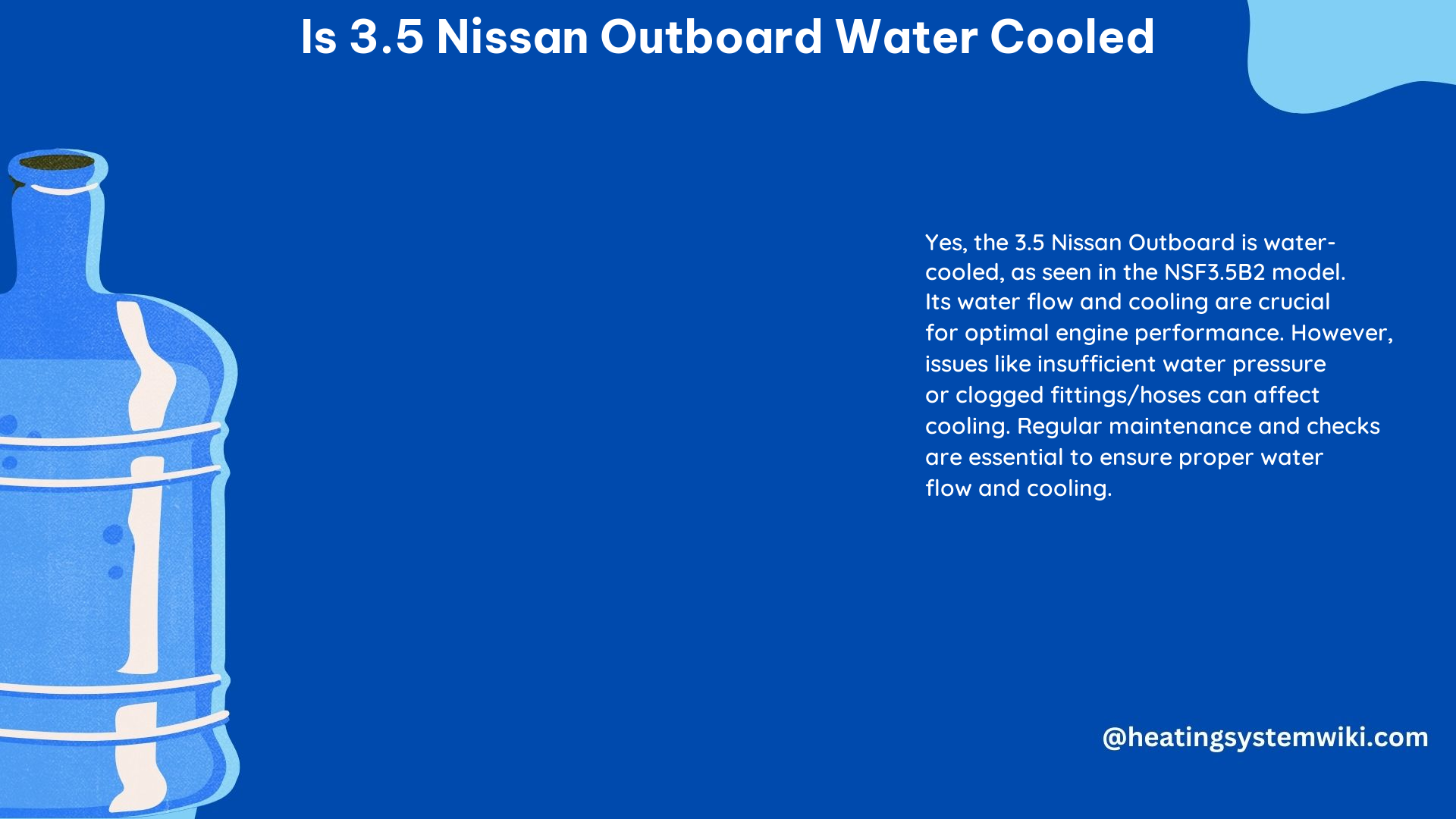The 3.5 Nissan outboard engine is a compact and reliable four-stroke marine engine designed for use in small boats and other watercraft. One of the key features of this engine is its water-cooled design, which helps to dissipate heat and maintain optimal operating temperatures.
Technical Specifications of the 3.5 Nissan Outboard Water-Cooled Engine
- Engine Type: Four-stroke, single-cylinder
- Displacement: 3.5 horsepower (hp)
- Cooling System: Water-cooled with a water pump and water-cooled exhaust
- Fuel System: Carburetor
- Ignition System: Transistorized
- Lubrication System: Separate oil sump
- Propeller Shaft Rotation: Counterclockwise (viewed from the stern)
- Dry Weight: Approximately 33 lbs (15 kg)
- Recommended Fuel: Unleaded gasoline with a minimum octane rating of 87
- Recommended Engine Oil: SAE 10W-30 or 10W-40 four-stroke outboard engine oil
Understanding the Water Cooling System

The water-cooled design of the 3.5 Nissan outboard engine is essential for its efficient and reliable operation. The cooling system works as follows:
- Water Intake: Water is drawn from the surrounding body of water through an intake port located near the cavitation plate.
- Water Pump: A water pump, driven by the engine’s crankshaft, circulates the water through the cooling system.
- Cylinder Head Cooling: The water flows through passages in the cylinder head, absorbing heat from the combustion process.
- Exhaust Cooling: The water-cooled exhaust system helps to dissipate heat from the engine’s exhaust gases, further contributing to the overall cooling.
- Water Discharge: The heated water is then expelled through a discharge port, typically located near the transom of the boat.
The water-cooled design of the 3.5 Nissan outboard engine offers several benefits:
- Efficient Heat Dissipation: The water-cooling system effectively removes heat from the engine, preventing overheating and ensuring optimal operating temperatures.
- Reduced Noise and Vibration: The water-cooled exhaust system helps to dampen engine noise and vibration, providing a more comfortable boating experience.
- Corrosion Resistance: The use of water-cooled components helps to protect the engine from the corrosive effects of saltwater or other marine environments.
- Improved Durability: The water-cooling system contributes to the overall durability and longevity of the 3.5 Nissan outboard engine.
Maintaining the Water Cooling System
Proper maintenance of the water-cooling system is crucial for the long-term performance and reliability of the 3.5 Nissan outboard engine. Here are some key maintenance tasks:
- Water Pump Inspection and Replacement: Regularly check the water pump for signs of wear or damage, and replace it if necessary. A malfunctioning water pump can lead to overheating and engine damage.
- Water Intake and Exhaust Port Cleaning: Ensure that the water intake and exhaust ports are free from debris, seaweed, or other obstructions that could restrict water flow.
- Impeller Inspection and Replacement: Inspect the impeller (the rotating component of the water pump) for wear or damage, and replace it if necessary. A worn impeller can reduce water flow and cooling efficiency.
- Cooling System Flushing: Periodically flush the cooling system to remove any accumulated debris or sediment that could impede water flow.
- Engine Oil Maintenance: Regularly check and change the engine oil as recommended by the manufacturer. Proper oil maintenance helps to ensure the engine’s overall health and longevity.
By following the manufacturer’s recommended maintenance procedures and using only approved parts and fluids, you can help ensure the long-term reliability and performance of your 3.5 Nissan outboard water-cooled engine.
Conclusion
The 3.5 Nissan outboard engine is a compact and reliable four-stroke marine engine that features a water-cooled design. This cooling system is essential for efficient heat dissipation, reduced noise and vibration, corrosion resistance, and improved engine durability. By understanding the technical specifications and maintenance requirements of the water-cooling system, boat owners can ensure the optimal performance and longevity of their 3.5 Nissan outboard engine.
